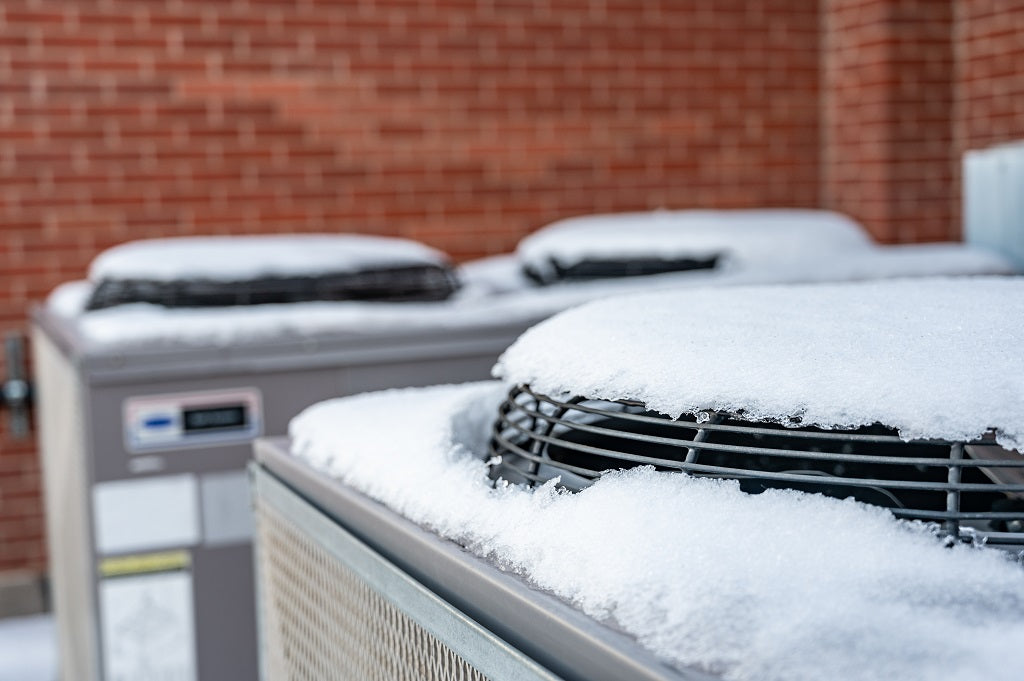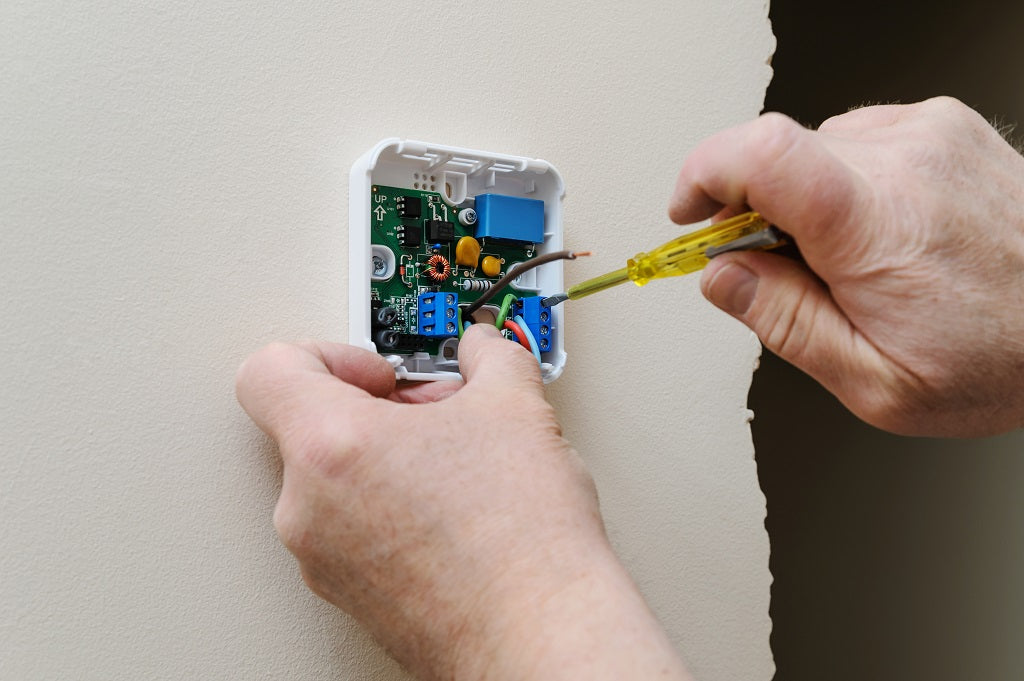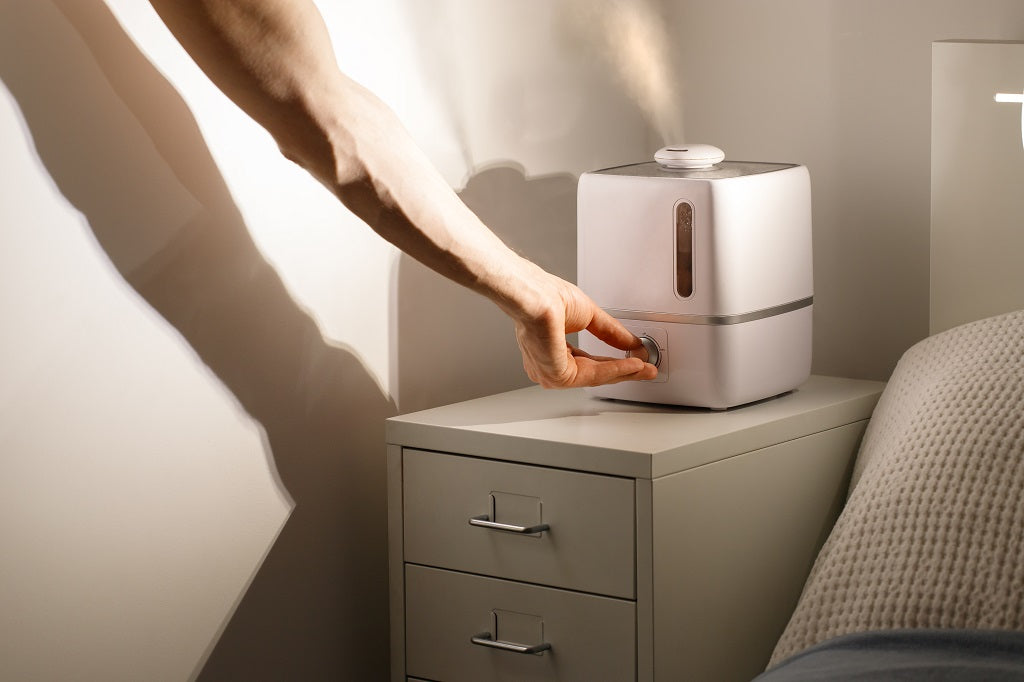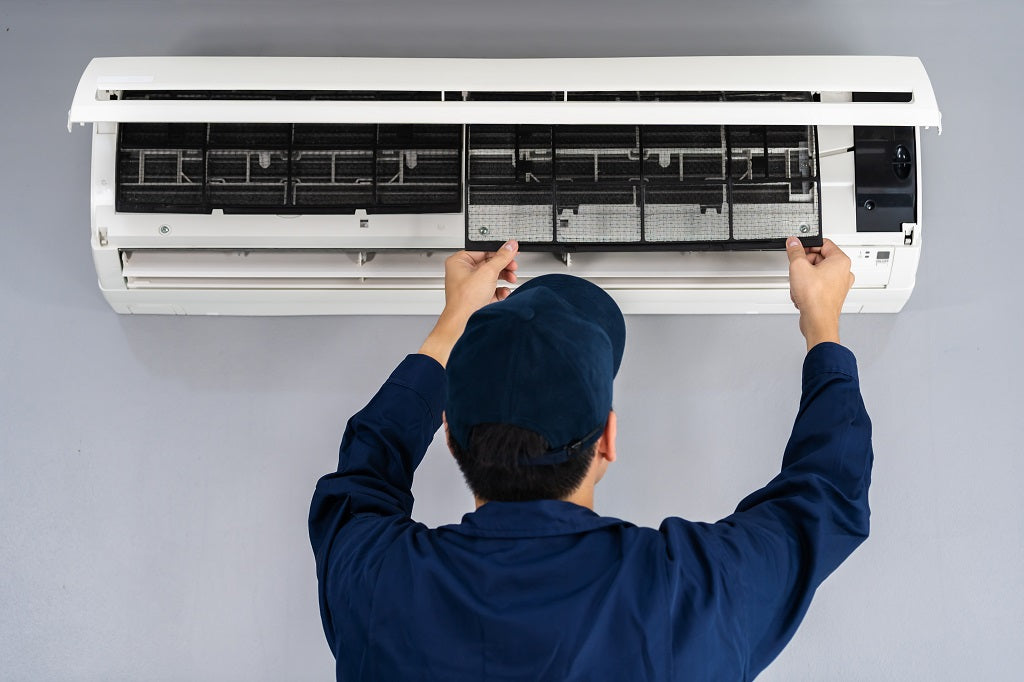
Once upon a time, an air conditioning unit was a luxury only reserved for the most well-appointed homes. But times have changed, and these days a large percentage of homes have air conditioning units. But do you really know how it works? If you’ve ever wondered about the parts of an air conditioner, we’ve got the answers for you here. From the condenser for air conditioners to the other air conditioning units parts, we’ll go through each of the seven main AC components so you can truly understand how they work. So read on to find out more about each of the air conditioning unit parts!
1. Refrigerant
The first component of your air conditioner that you need to know about is the refrigerant. What is refrigerant, and how does it work? You may have heard it called coolant or maybe by the brand name Freon. Simply put, it’s the stuff that actually does the cooling. The refrigerant runs on a closed loop through the copper and/or steel tubing from the interior to the exterior of your building, absorbing heat from the interior of your home and pushing it to the exterior, changing from a gas to a liquid. Once the refrigerant has pushed and dispersed the heat outdoors, it turns back into a gas and travels back indoors. As the refrigerant cools down again, a fan blows air over the now cold coils to circulate the cold air throughout the home. This happens, again and again, every time your air conditioning unit is turned on.
It’s important to note that oftentimes, the main reason for AC malfunction is due to the refrigerant leaking, so having a good refrigerant leak detector is key.
2. Compressor
Next up is the compressor, which pressurizes the refrigerant and raises its temperature in turn. How does this work? There is a combination of gas laws that states that if you raise the pressure of a gas, so does its temperature. The reason this happens is that the refrigerant needs to get significantly hotter than the air outside in order to get the gas to naturally flow to the outside because hot air always moves toward cooler air. This way, no matter how hot it is outdoors, the gas refrigerant will always flow to the exterior unit and disperse its heat outdoors.
3. Condenser Coil and Fan
The condenser coil, which is the opposite of the evaporator (which we’ll discuss below) serves the purpose of pulling heat away from the refrigerant. This condenser for your air conditioner is located, as you could guess, in the exterior unit of your AC system. This condenser has a fan that does the opposite of your interior AC unit, blowing heat away from it and outside of your home. If you were to stand directly outside your exterior AC unit while it was running, you’d feel hot air blowing out of the unit. This is the condenser doing its work. This is the process that begins to turn the refrigerant from hot air to liquid.
4. Air Filter
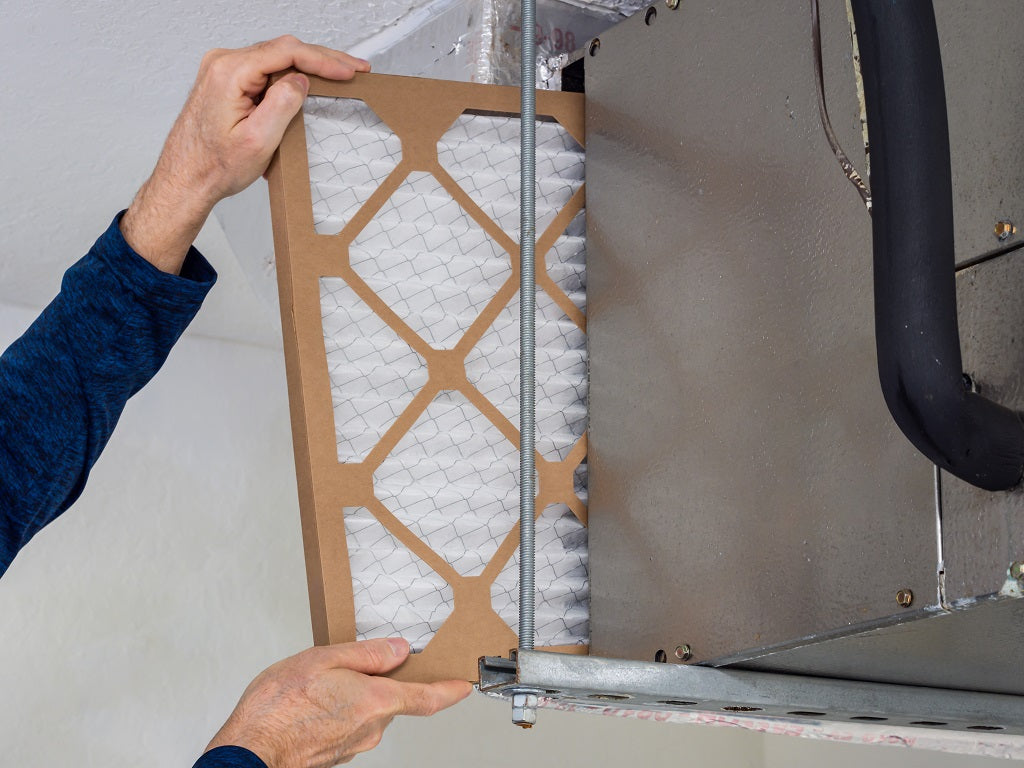
If you know one thing about an air conditioning unit, you likely know there is an air filter. In essence, the air filter helps to remove particles from the air as it is pushed back into your home. As with just about any filter - such as your coffee filter, for instance - the air filter consists of a porous barrier that larger and more harmful particles cannot pass through. As the air passes through the filter, the particles get stuck in the fibers of the filter, thus cleaning the air. These filters are essential to maintain your overall health, especially if you have allergies or asthma. Depending on the kind of air filter you install, you may be able to filter out some or all of the following types of particles:
- Mold
- Pollen
- Outdoor pollutants
- Pet fur and dander
- Dust
It goes without saying that when it comes to your well-being, having a good and functioning filter is absolutely key.
5. Evaporator
Conversely, the evaporator works to absorb the heat inside your home. It’s usually attached either to your furnace or inside the air handler. This is a very delicate component of your air conditioning unit and definitely requires some extra care if not working properly. Some of the things you may notice if your evaporator isn’t working properly can include the following:
- Warm air blowing from your vents.
- Hissing and/or banging noises coming from your coolant system.
- A possible refrigerant leak.
- AC does not provide you with cold air, even though it’s starting and stopping.
- AC not turning on at all.
In any event, it’s important for you to get in touch with a licensed technician to diagnose and fix the problem quickly.
6. Expansion Valve
Once the refrigerant has passed through the condenser and turned back into a liquid, it’s still too hot to enter the evaporator coils and must be cooled down. This is where the expansion valve comes into play. And if you’ve been following along so far, you may be able to guess what the expansion valve does. It depressurizes the refrigerant, which by the same combination gas laws we already mentioned, helps to cool down the liquid. Then, once the liquid refrigerant is cool enough to enter the evaporator, it can then turn into a gas again. The expansion valve also controls the amount of refrigerant that enters the evaporator, which has a direct effect on the power of your AC system.
7. Thermostat
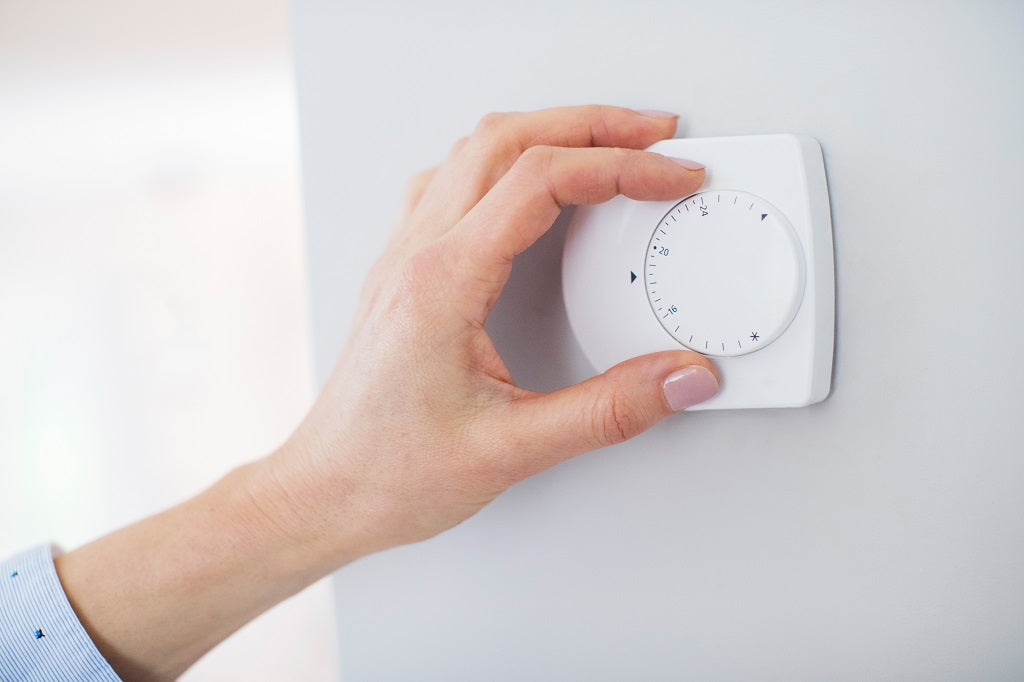
We lied. You probably know one more thing about your air conditioning unit in addition to the filter, and that’s the thermostat. This panel, or series of panels, inside your home is where you inform and program your air conditioning unit to maintain the ideal indoor temperature, turn your air conditioner on or off, or adjust other various settings. Thermostats have built-in temperature and humidity sensors, allowing it to help regulate the flow of the refrigerant through your unit. Many thermostats are now “smart” thermostats, where you can control the AC temperature from your smartphone, set specific temperature schedules, or even do geofencing (which basically means your unit will turn on or off based on the presence of your phone). If you're looking for the latest thermostats, Blackhawk Supply is here to help!
How Do All These Components Work Together?
So now you know all the components of an air conditioner, but how do they integrate with one another to cool the air in your home? It’s actually pretty “cool” (pun intended). First, the return vents suck in hot air from your room. As the hot air flows across the cold evaporator coils, the refrigerant picks up the heat. Once the refrigerant has absorbed enough heat, it is compressed (by the compressor) which pressurizes and heats up the refrigerant even more. It flows towards the condenser coils, where a large fan helps to push the hot air outdoors. This fan also helps to cool the refrigerant down. Moving back into the interior unit, the expansion valve then depressurizes the refrigerant, allowing it to cool back down even more. Then the process begins again all over again!
Conclusion
So there you have it. If you’ve ever wondered “what are the parts of an air conditioner,” you now know all the parts of your AC. A relatively simple yet absolutely ingenious device that helps to cool your home on a reliable basis. As a homeowner, knowing about all these components can help you understand what may or may not be working, and make sure that the technician you’re working with is telling you the whole story. And in the event that you do find yourself in need of a replacement for one of these air conditioner components, Blackhawk Supply carries the best supplies for HVAC systems!















